10 Expert Tips for Choosing Dimmable Lights for Your Bedroom
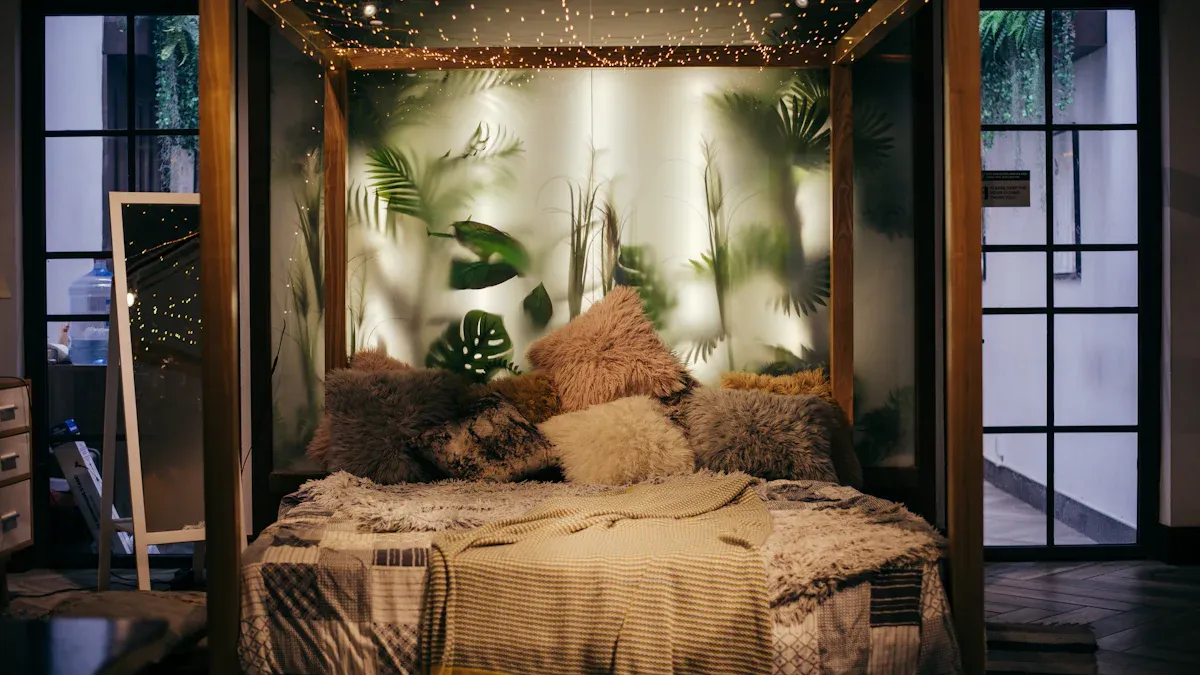
Creating a comfortable bedroom begins with selecting the right lighting. A dimmable light for the bedroom allows you to adjust the brightness to suit your needs. It helps you relax by creating a calming atmosphere, ideal for preparing both your mind and body for sleep. Research indicates that subdued lighting levels of 50-100 lux are perfect for relaxation, while brighter settings up to 150 lux are suitable for activities such as reading.
The adaptability of a dimmable light for the bedroom ensures your space accommodates various moods. Whether you prefer a gentle glow to unwind after a tiring day or brighter illumination for a productive morning, dimmable options provide excellent versatility. Additionally, they enhance energy efficiency by conserving power when full brightness isn’t required. Choosing the right dimmable light for your bedroom promotes better sleep, a balanced mood, and a more practical living space.
Key Takeaways
Dimmable lights help you relax and sleep better at night.
Change brightness to match activities, keeping your room useful.
Pick warm white light (2700K-3000K) for a soft, cosy feel.
Use energy-saving LED dimmable lights to cut electricity costs.
Make sure bulbs and switches work together to stop flickering.
Benefits of Using Dimmable Lights in Your Bedroom
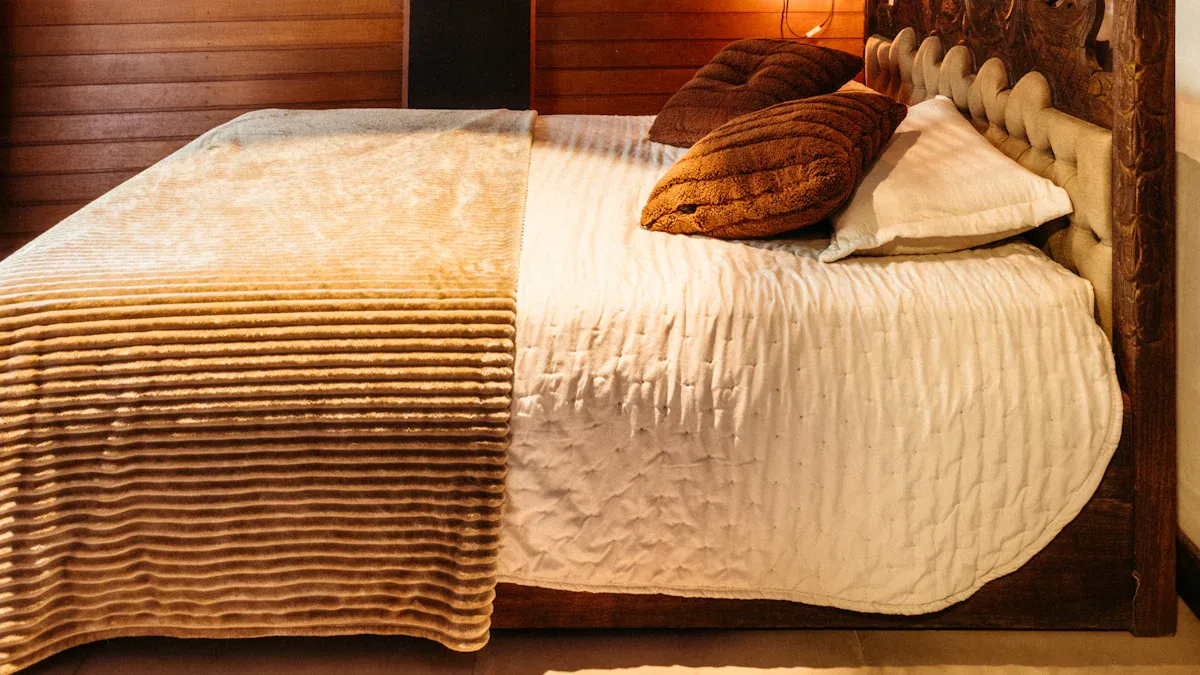
Minimalist |
Ceiling Light |
Bedroom/Living Room |
L15.7" /L19.6" |
2 KG/2.5 KG |
LED |
Warm Light |
3 Color Swithable |
Dimmable |
Create a Relaxing Sleep Environment
Dimmable lights play a vital role in creating a calming atmosphere in your bedroom. By lowering the brightness, you can prepare your mind and body for sleep. Soft, warm lighting helps signal your brain that it is time to unwind. This promotes relaxation and improves your sleep quality. Unlike harsh cool lights, which can disrupt your natural sleep cycle, warm tones encourage a sense of comfort. You can also use accent lighting to highlight cosy corners, adding to the overall tranquillity of your space
Adjust Lighting for Different Activities
Your bedroom serves multiple purposes, from resting to working or reading. Dimmable LED lights allow you to adjust the brightness to suit each activity. For reading or working, brighter task lighting ensures you can focus without straining your eyes. When relaxing, dim the lights to create a soothing mood. Accent lighting can further enhance the ambience by highlighting decorative elements or creating a layered lighting effect. This flexibility ensures your bedroom remains functional and inviting.
Save Energy with Dimmable LED Lights
Dimmable LED lights are an energy-efficient choice for your bedroom. By reducing the brightness when full illumination is unnecessary, you conserve electricity and lower your energy bills. LED lights for bedrooms consume significantly less power compared to traditional bulbs. They also last longer, reducing the need for frequent replacements. Whether you need ambient lighting or task lighting, dimmable LED lights provide a sustainable solution without compromising on style or functionality.
Ensure Compatibility with Your Dimmer Switch
Understand Leading-Edge vs Trailing-Edge Dimmers
Choosing the right dimmer switch for your bedroom lighting is crucial. Not all dimmers work with every type of bulb, so understanding the differences between leading-edge and trailing-edge dimmers can help you make an informed decision.
Dimmer Type |
Pros |
Cons |
|---|---|---|
Leading Edge |
• Simple design and easy to install |
• Incompatible with LEDs |
Trailing Edge |
• Compatible with LEDs and CFLs |
• Less suitable for high-wattage lighting |
Leading-edge dimmers work by cutting the current flow at the start of the AC cycle. This method suits traditional incandescent bulbs but often causes issues with dimmable LED lights. On the other hand, trailing-edge dimmers cut the current at the end of the AC cycle. This approach provides smoother dimming and is ideal for modern LED lighting.
If you plan to use dimmable LED lights in your bedroom, trailing-edge dimmers are the better choice. They operate quietly, generate less heat, and offer better energy efficiency. However, they may cost more and require professional installation.
Avoid Flickering with Compatible Dimmable LED Bulbs
Flickering lights can ruin the ambience of your bedroom and strain your eyes. To avoid this, ensure your dimmer switch and bulbs are compatible.
"Not every dimmer can work with every LED. Verify compatibility to prevent problems and to get the best performance."
Here are some tips to help you avoid flickering:
Match the dimmer type with the bulb's dimming technology, such as PWM (Pulse Width Modulation).
Look for compatibility information on the packaging of both the dimmer switch and the bulbs.
Test the dimmer and bulb combination before installation.
Older dimmer switches designed for incandescent bulbs may not work well with dimmable LED lights. Upgrading to a modern dimmer rated for LEDs can solve this issue. Additionally, some LED bulbs have wattage limitations that affect their compatibility with dimmers. Always check the specifications to ensure a smooth dimming experience.
By taking these steps, you can enjoy the full benefits of a dimmable light for your bedroom without any flickering or performance issues.
Choose the Right Brightness for Your Bedroom
Aim for 800 Lumens for Ambient Lighting
Choosing the right brightness is essential for creating a comfortable and functional bedroom. For ambient lighting, aim for around 800 lumens. This level provides a soft yet sufficient glow that evenly illuminates the room without being overpowering. It is particularly effective when paired with dimmable fixtures, allowing you to adjust the intensity based on your needs. A dimmable light for bedroom use ensures you can create a relaxing atmosphere for sleep or brighten the space for activities like reading or organising.
Warm white light, ranging from 2700K to 3000K, works best for bedrooms. It produces a cosy and inviting glow that promotes relaxation. In contrast, cool white light, typically between 4000K and 5000K, can feel harsh and disrupt the calming environment needed for quality sleep. By combining the right brightness with warm tones, you can achieve the best lighting for bedrooms that supports both comfort and functionality.
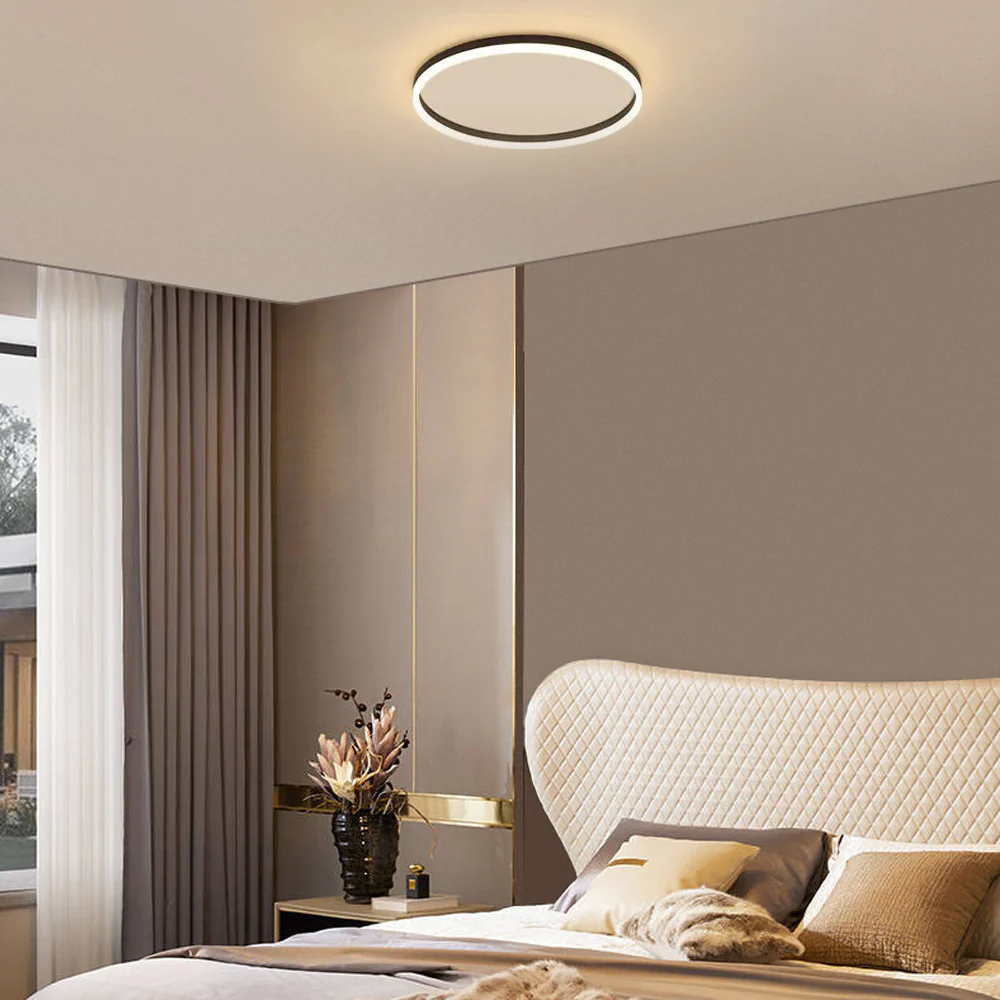
Modern |
Ceiling Light |
LED |
15.7"/19.7" |
Warm light |
Natural light |
Cool light |
Dimmable |
3 Color Swithable |
Adjust Brightness Based on Room Size and Needs
The size of your bedroom significantly influences the amount of light required. A small bedroom typically needs around 2,000 lumens, while a medium-sized room benefits from 3,000 lumens. For larger bedrooms, aim for approximately 4,000 lumens to ensure adequate illumination.
Room Size |
Recommended Total Lumens |
|---|---|
Small Bedroom |
2,000 |
Medium Bedroom |
3,000 |
Large Bedroom |
4,000 |
In addition to room size, consider your specific needs. General bedroom lighting should fall between 50 and 150 lux, with an average of 375 lumens for task lighting. For example, if you enjoy reading in bed, ensure your bedside lamp provides focused task lighting to prevent eye strain. Meanwhile, ambient lighting can remain softer to maintain a relaxing mood.
By tailoring the brightness to your bedroom’s size and your activities, you can create a versatile space that supports both relaxation and productivity. This approach ensures your lighting setup enhances your sleep quality and overall comfort.
Select the Best Colour Temperature for Sleep
Opt for Warm White (2700K-3000K) for Cosiness
Choosing the right colour temperature for your bedroom lighting is essential for creating a cosy and relaxing atmosphere. Warm white light, ranging from 2700K to 3000K, is ideal for bedrooms. It emits a soft, inviting glow that mimics traditional incandescent bulbs, making your space feel more intimate and comfortable. This type of lighting enhances your mood and helps you unwind after a long day.
Warm-toned LED lights in the 2700K range are particularly effective for promoting relaxation. They lack blue light waves, which can interfere with your body’s natural sleep cycle. By reducing blue light exposure, these lights encourage melatonin production, helping you prepare for restful sleep. The 2700K range also creates a more soothing environment compared to 3000K, which has a slightly cooler tone. This makes it perfect for winding down and setting the right mood for sleep.
Experts recommend using warm-toned LED lights in bedrooms to limit exposure to harsh lighting at night. Softer, warmer light not only supports relaxation but also reduces eye strain, making it easier to transition into a restful state. Whether you’re reading, meditating, or simply relaxing, warm white lighting provides the perfect balance of comfort and functionality.
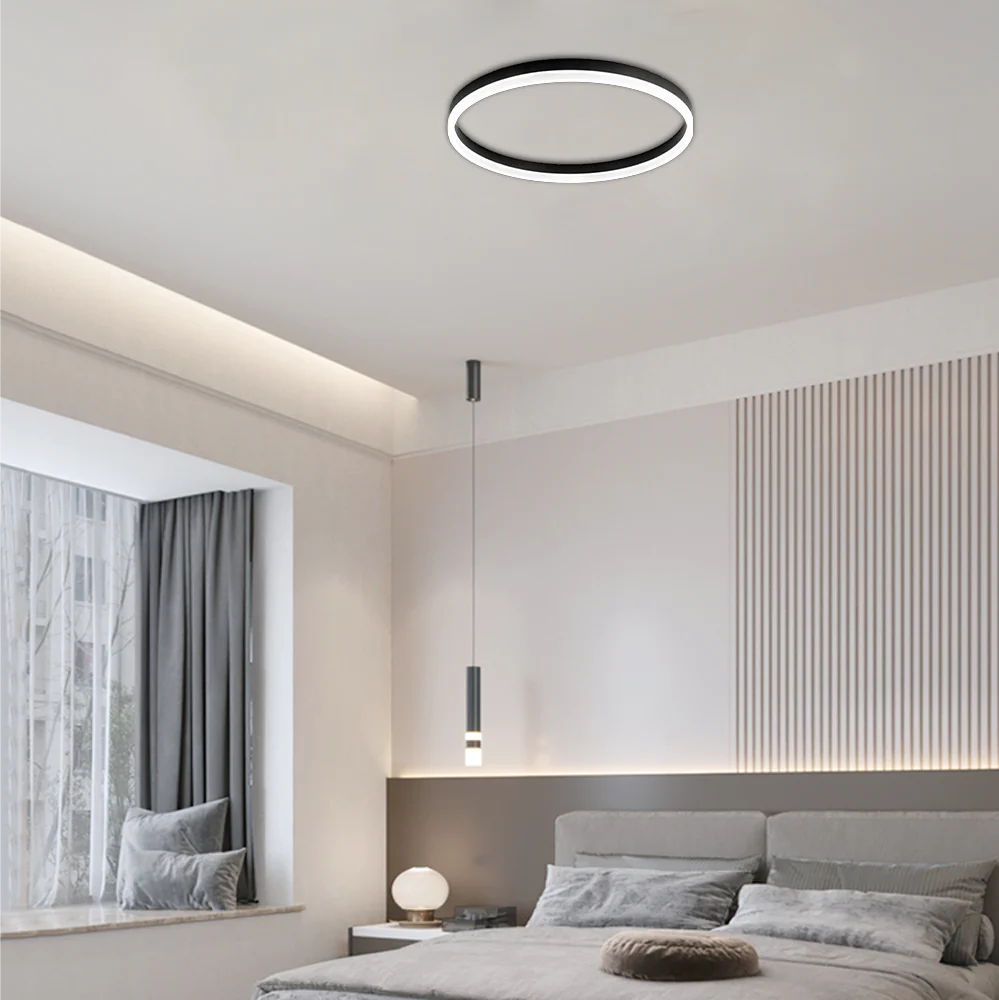
Modern |
Ceiing Lights |
Bedroom |
White |
Black |
Gold |
W15.7"/W19.6" |
Dimmable |
3 Color Swithable |
Avoid Cool White for Better Relaxation
Cool-toned lighting, such as cool white light, is not suitable for bedrooms. It contains a significant amount of blue light, which can disrupt your body’s ability to relax. Studies show that exposure to blue light can reduce melatonin production by up to 23%, making it harder for you to fall asleep. This type of lighting is better suited for workspaces or areas where focus and alertness are required, not for creating a calming bedroom environment.
Prolonged exposure to cool-toned lighting can also increase eye strain, which negatively impacts your comfort. In contrast, yellow-toned lighting, like warm white, reduces eye strain by 20% and promotes better sleep. By avoiding cool white light in your bedroom, you can create a space that supports relaxation and helps you maintain a healthy sleep routine.
To optimise your bedroom lighting, focus on using warm-toned LED lights that range between 2700K and 3000K. These lights provide a cosy glow that enhances the overall ambience of your room. They also help you relax by reducing the stimulating effects of blue light. For a truly restful environment, steer clear of cool-toned lighting and prioritise warm, soothing options instead.
Prioritise Energy Efficiency with Dimmable LED Lights
Benefits of LED Over Traditional Bulbs
Switching to LED light bulbs in your bedroom offers significant advantages over traditional options like incandescent or CFL bulbs. LEDs consume far less energy while providing the same level of brightness. For example, a typical incandescent bulb uses 60 watts, whereas an LED bulb only requires 10 watts to produce comparable light. This efficiency translates to lower electricity costs.
Bulb Type |
Wattage (Typical) |
Cost for 24 Hours (at $0.15/kWh) |
|---|---|---|
Incandescent Bulb |
60W |
$0.22 |
CFL Bulb |
15W |
$0.054 |
LED Bulb |
10W |
LED light bulbs also last much longer than traditional bulbs. While an incandescent bulb may only last 1,000 to 2,000 hours, LEDs can operate for 25,000 to 50,000 hours or more. This longevity reduces the need for frequent replacements, saving you both time and money. Additionally, LEDs produce minimal heat, making them safer and more comfortable for bedroom use.
Type of Bulb |
Lifespan (hours) |
Energy Efficiency |
Heat Production |
|---|---|---|---|
LEDs |
25,000 - 50,000 (up to 100,000) |
Highly efficient, minimal heat |
Minimal |
Incandescent Bulbs |
1,000 - 2,000 |
Least efficient, significant heat |
Significant |
CFLs |
8,000 - 15,000 |
Moderately efficient, moderate heat |
Moderate |
By choosing dimmable LED lights, you can further enhance energy efficiency. Dimming reduces power consumption, allowing you to create a warm and inviting atmosphere while conserving energy.
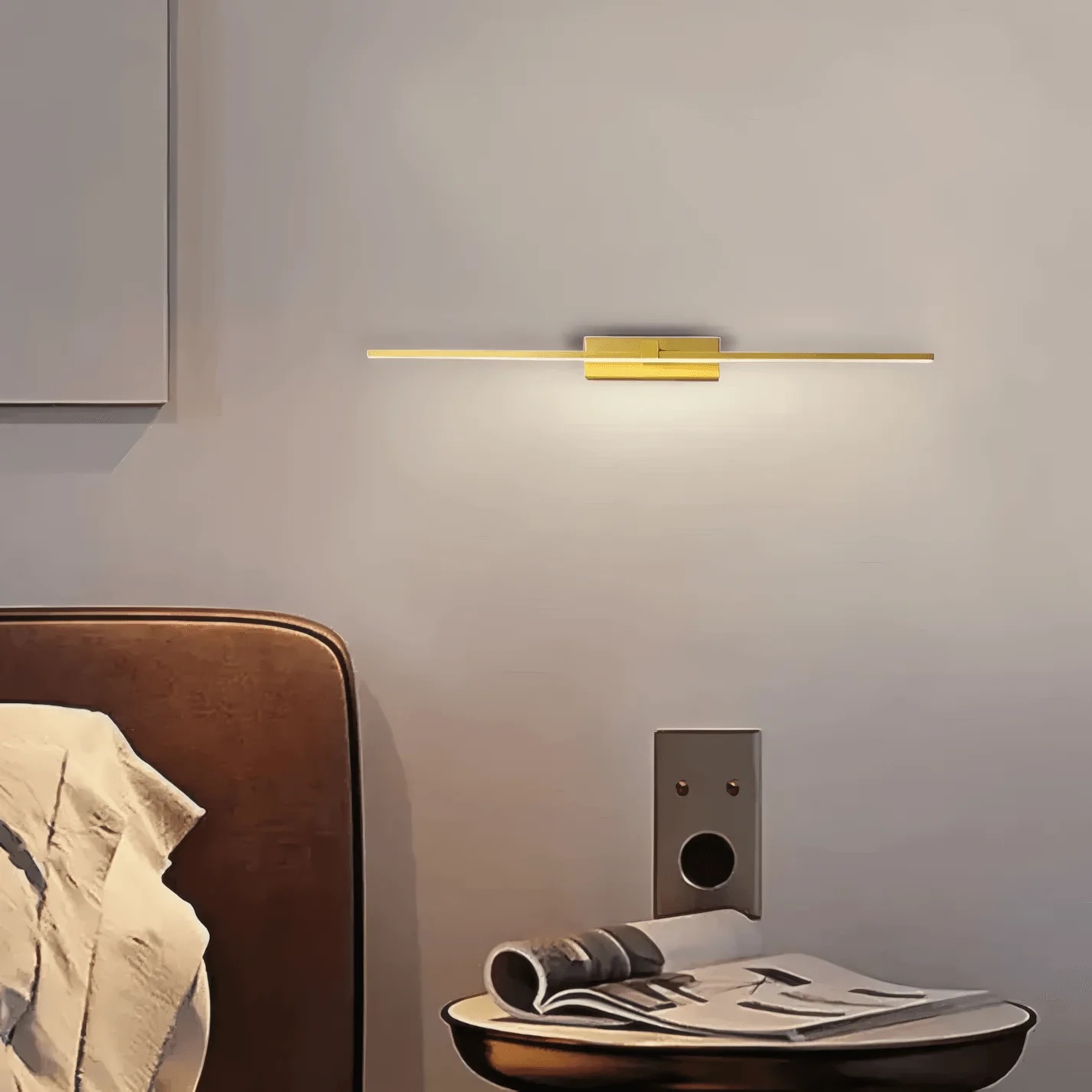
Minimalist |
Wall Lamp |
Living Room |
15.7"/23.6"/31.5 " |
LED |
IP44 |
Warm Light |
White Light |
3 Color Swithable |
Long-Term Savings with Energy-Efficient Options
Energy-efficient LED lights not only reduce your electricity bills but also offer substantial long-term savings. Studies show that LED lighting is up to 44% more efficient than traditional fluorescent tubes. For an average household, switching to energy-efficient lighting can save approximately $225 annually in energy costs.
Lighting accounts for about 15% of a typical home's electricity use.
Using dimmers with LED light bulbs allows you to lower light levels, further reducing energy consumption.
LEDs last significantly longer than traditional bulbs, cutting down on replacement costs over time.
In addition to financial savings, energy-efficient LED lights contribute to a more sustainable lifestyle. By consuming less power and producing less heat, they help reduce your carbon footprint. This makes them an excellent choice for environmentally conscious homeowners.
Investing in dimmable LED lights for your bedroom ensures you enjoy a cosy, warm ambience while saving money and energy. Their efficiency, durability, and adaptability make them a smart and sustainable lighting solution.
Invest in High-Quality Dimmable LED Bulbs
Look for Trusted Brands and Certifications
Choosing dimmable LED bulbs from reputable brands ensures better performance and reliability in your bedroom. Trusted manufacturers often invest in advanced technology and rigorous quality control, offering products that last longer and perform consistently.
Some of the most reliable brands include:
Philips: Known for its wide range of smart lighting options, Philips offers excellent dimmable LED bulbs that enhance your bedroom's ambience.
GE: A leader in traditional lighting solutions, GE provides cost-effective options without compromising on quality.
Cree: Renowned for high-performance LED bulbs, Cree delivers exceptional light quality and colour rendering, ideal for creating a relaxing environment.
When selecting bulbs, look for certifications that guarantee safety and quality. Certifications like UL, ETL, and BIS indicate that the product has undergone rigorous testing. These marks ensure that the bulbs meet safety standards and perform reliably under various conditions.
Ensure Durability and Consistent Performance
High-quality dimmable LED bulbs undergo extensive testing to ensure they meet durability and performance standards. Manufacturers use several testing methods to verify the reliability of their products:
Test Type |
Description |
|---|---|
Ensures bulbs perform well under prolonged operating conditions. |
|
Performance Testing |
Evaluates quality and reliability at different production stages. |
Safety Testing |
Assesses electrical safety and performance characteristics to meet industry standards. |
Certifications also play a crucial role in verifying the durability of dimmable LED bulbs. Products with certifications like UL and ETL undergo thorough evaluations to ensure they meet stringent safety and performance criteria.
Certification |
Description |
|---|---|
BIS |
Ensures compliance with national standards for quality and safety. |
UL |
Guarantees electrical safety and performance through rigorous testing. |
ETL |
Confirms that products meet specific quality, safety, and performance standards. |
Investing in durable, certified bulbs reduces the need for frequent replacements, saving you money and effort. Reliable bulbs also provide consistent lighting, creating a comfortable atmosphere in your bedroom. This consistency is essential for activities like reading or preparing for sleep, where stable lighting enhances your experience.
By choosing high-quality dimmable LED bulbs, you ensure your bedroom lighting remains functional, safe, and long-lasting.
Match Lighting to Your Bedroom Décor
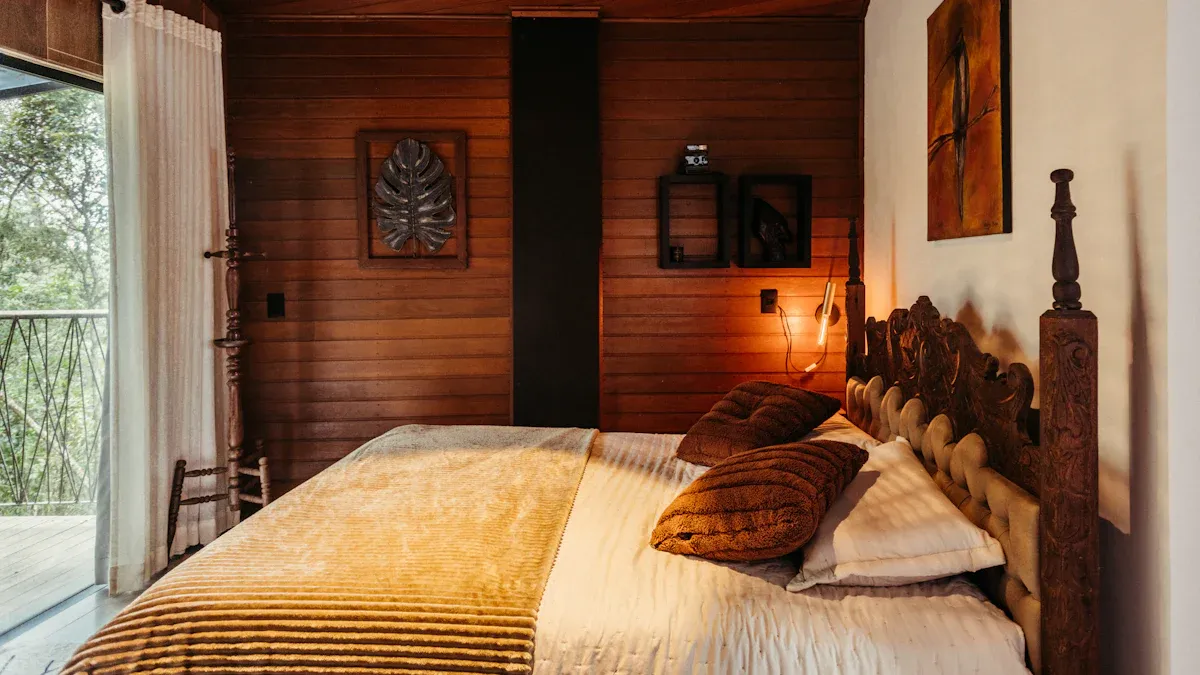
Choose Fixtures That Complement Your Style
Lighting fixtures can transform your bedroom into a stylish and functional space. Choosing fixtures that align with your décor enhances the overall aesthetic while maintaining practicality. Start by identifying your bedroom’s design theme. Whether you prefer modern minimalism, rustic charm, or bohemian flair, select lighting fixtures that complement these styles.
For example, pendant lamps with sleek finishes work well in modern bedrooms, while vintage sconces add character to rustic spaces. Soft glow lighting fixtures create a cosy atmosphere, producing gentle, warm light that promotes relaxation and better sleep. Accent and task lighting, such as adjustable wall-mounted lamps, highlight specific features and improve usability. Stylish pendant lamps can also serve as focal points, adding depth to your bedroom design.
Layering your lighting is another effective design principle. Combine ambient lighting for general illumination, task lighting for focused activities, and accent lighting to highlight decorative elements. This approach ensures your bedroom remains functional while exuding charm.
Design Principle |
Description |
|---|---|
Choose fixtures that align with the overall aesthetic, such as modern, rustic, or bohemian styles. |
|
Prioritise Warm Colour Temperatures |
Use warm white lights (2700K–3000K) to reduce stress and promote relaxation. |
Layer Your Lighting |
Combine ambient, task, and accent lighting for a well-rounded effect. |
Case Study |
A client improved sleep quality by replacing harsh lights with a dimmable chandelier, adjustable sconces, and warm LED strips. |
Consider Placement for Optimal Lighting
Strategic placement of lighting fixtures ensures your bedroom remains functional and visually appealing. Begin by assessing the layout of your room. Place ambient lighting, such as ceiling fixtures, in central locations to provide even illumination. For task lighting, position bedside lamps or wall-mounted lights near areas where you read or work. This prevents eye strain and enhances productivity.
Accent lighting adds depth and highlights specific features. Use LED strips under shelves or behind headboards to create a soft glow that complements your décor. Pendant lamps can hang above nightstands or seating areas, serving as both functional and decorative elements. Functional lighting solutions, like recessed lights, save space while providing practical illumination.
Consider how lighting interacts with your bedroom’s colour palette and materials. Fixtures with metallic finishes pair well with neutral tones, while wooden accents complement earthy designs. Matching the style and placement of your lighting fixtures with your décor creates a harmonious environment that supports relaxation and better sleep.
Tip: Avoid overcrowding your bedroom with too many fixtures. Focus on creating a balanced lighting setup that enhances both functionality and style.
Explore Smart Dimmable Lighting Options
Control Lights with Apps or Voice Commands
Smart dimmable lighting systems offer unparalleled convenience by allowing you to control your bedroom lights through apps or voice commands. These systems integrate seamlessly with devices like smartphones, tablets, or smart speakers, giving you complete control at your fingertips. You can adjust brightness levels, turn lights on or off, and even schedule lighting changes without leaving your bed.
Voice control adds another layer of ease. By connecting your dimmable LED lights to virtual assistants like Alexa, Google Assistant, or Siri, you can manage your lighting with simple voice commands. For example, saying, "Dim the lights to 50%," instantly creates a relaxing mood. This hands-free functionality is especially useful when you’re winding down for sleep or multitasking.
Tip: Look for smart lighting systems that support standards like Matter. These ensure compatibility with a wide range of devices and enhance security.
Smart lighting also allows automation based on your daily routines. Lights can dim gradually in the evening to signal bedtime or brighten in the morning to help you wake up naturally. This feature not only improves convenience but also supports a healthier sleep cycle.
Customise Lighting Scenes for Sleep and Relaxation
Smart dimmable LED lights let you create a fully customisable atmosphere in your bedroom. With app-based controls, you can set up different lighting scenes tailored to your activities. For instance, a "Relax" scene might feature warm, dim lighting to help you unwind, while a "Reading" scene could provide brighter, focused light.
These systems also allow you to adjust the colour temperature to suit your mood. Warm tones promote relaxation and prepare your body for sleep, while cooler tones can energise you during the day. By experimenting with different settings, you can find the perfect balance for your bedroom.
Did you know? Dimmable LED lights maintain energy efficiency at all brightness levels, making them an eco-friendly choice for creating the ideal ambience.
Customised lighting scenes not only enhance your mood but also improve the functionality of your space. Whether you’re meditating, reading, or simply relaxing, smart lighting ensures your bedroom adapts to your needs effortlessly.
Test Dimmable Lights Before Purchasing
Check the Dimming Range and Smoothness
Before purchasing dimmable lights for your bedroom, test their dimming range and smoothness. A high-quality dimmable light should transition seamlessly between brightness levels without flickering or sudden jumps. This ensures you can create the perfect atmosphere for activities like reading or preparing for sleep. Poor dimming performance can disrupt the ambience and make your lighting less functional.
To evaluate the dimming range, check how low the light can go without turning off completely. A good dimmable bulb should dim to at least 10% of its maximum brightness. This allows you to create soft, ambient lighting for relaxation. Smoothness is equally important. Lights that dim unevenly or flicker can strain your eyes and reduce comfort.
When testing, use the dimmer switch you plan to install in your bedroom. This helps you identify any compatibility issues early. If possible, test the lights in a setting similar to your bedroom to ensure they meet your expectations. By doing this, you can avoid problems and enjoy a lighting setup that enhances your sleep environment.
Ensure Compatibility with Your Setup
Compatibility between your dimmable lights and existing setup is crucial. Not all dimmers work with every type of bulb, and mismatched components can lead to flickering, buzzing, or even damage. To ensure a smooth experience, review the technical specifications of both your dimmer switch and the bulbs.
Here’s a quick guide to help you navigate compatibility:
Evidence Type |
Description |
|---|---|
MLV and ELV dimmers are not universally compatible with all LEDs due to differing electrical designs, impacting performance and safety. |
|
Consulting manufacturer guidelines ensures that lights and dimmers work in harmony, preventing issues like flickering and buzzing. |
|
Compatibility Charts |
Reviewing manufacturer compatibility charts helps compare different brands and models suitable for your needs. |
LED-Compatible Dimmers |
Look for dimmers explicitly labelled as LED-compatible, as they are designed to manage the low wattage and specific power requirements of LEDs. |
Start by checking if your dimmer is labelled as LED-compatible. These dimmers are designed to handle the low wattage of LED bulbs, ensuring smooth operation. Next, consult the manufacturer’s compatibility charts. These charts list dimmers and bulbs that work well together, helping you make an informed choice.
Testing your setup before finalising your purchase is also essential. Install one bulb and dimmer combination to see how they perform. This step helps you identify potential issues and ensures your bedroom lighting functions as intended. A compatible setup not only improves performance but also enhances the overall ambience, making your bedroom a more relaxing space for sleep.
Plan for Future Lighting Needs
Invest in Versatile and Upgradable Solutions
Planning for future lighting needs ensures your bedroom remains functional and adaptable. Versatile lighting solutions allow you to adjust to changing preferences or requirements. For example, dimmable LED bulbs with adjustable colour temperatures can create a relaxing atmosphere for sleep or energise you during the day. These bulbs offer flexibility, making them ideal for bedrooms that serve multiple purposes.
Upgradable lighting systems provide long-term benefits. Smart bulbs with smartphone control let you customise brightness and colour settings remotely. Human-centric lighting, designed to support your natural sleep-wake cycle, is another innovative option. This technology adjusts light intensity and colour temperature to promote relaxation or productivity, depending on the time of day.
Here’s a table highlighting future trends in dimmable lighting technology:
Trend Description |
Application in Bedroom Lighting |
|---|---|
Smart lamps for easy access |
Place a smart lamp on your bedside table for convenient control. |
Lighting schemes for comfort |
Use specific lighting schemes to enhance relaxation. |
Human-centric lighting |
Install lighting that supports rest and productivity. |
Smart bulbs with smartphone control |
Invest in smart bulbs to control lighting remotely. |
By investing in versatile and upgradable solutions, you future-proof your bedroom lighting while enhancing comfort and functionality.
Consider Smart Home Integration for Convenience
Smart home integration simplifies lighting control and improves your bedroom’s ambience. Connecting dimmable lights to a smart home system lets you manage them through apps or voice commands. You can adjust brightness, set timers, or create lighting scenes tailored to your sleep routine. For instance, dimming lights gradually in the evening signals your body to prepare for rest.
Smart lighting systems also offer automation features. Lights can brighten in the morning to help you wake up naturally or dim at night to create a calming environment. These systems integrate seamlessly with virtual assistants like Alexa or Google Assistant, allowing hands-free control.
Tip: Choose smart lighting systems compatible with standards like Matter to ensure smooth operation across devices.
Integrating smart lighting into your bedroom enhances convenience and supports a healthier sleep cycle. It also adds a touch of modernity, making your space more functional and stylish.
Dimmable lights transform your bedroom into a haven of comfort and functionality. They improve your sleep by creating a soothing environment and help you adjust the lighting to match your mood. These lights also save energy, making them a practical choice for your home. When selecting a dimmable light for bedroom use, focus on compatibility with your dimmer switch, the right brightness level, and a warm colour temperature. By considering these factors, you can create a cosy space that supports relaxation and enhances your overall well-being.
FAQ
1. Can you use dimmable lights with any dimmer switch?
No, not all dimmer switches work with dimmable lights. You must check compatibility between the dimmer and the bulb. Look for dimmers labelled as LED-compatible for smooth operation and avoid flickering or buzzing issues.
2. What is the ideal brightness for a small bedroom?
A small bedroom typically needs around 2,000 lumens for general lighting. Use dimmable fixtures to adjust brightness based on your activities. For reading or relaxing, aim for softer lighting to create a cosy atmosphere.
3. Do dimmable LED lights save energy?
Yes, dimmable LED lights consume less power when dimmed. They are up to 80% more efficient than incandescent bulbs. This reduces electricity bills and helps you create an eco-friendly lighting setup.
4. How do you choose the best colour temperature for sleep?
Warm white light (2700K–3000K) is ideal for sleep. It creates a relaxing environment and reduces blue light exposure, which can disrupt your sleep cycle. Avoid cool white light as it stimulates alertness.
5. Are smart dimmable lights worth the investment?
Smart dimmable lights offer convenience and customisation. You can control them via apps or voice commands and set lighting scenes for relaxation or productivity. They also integrate with smart home systems, making them a versatile choice.

